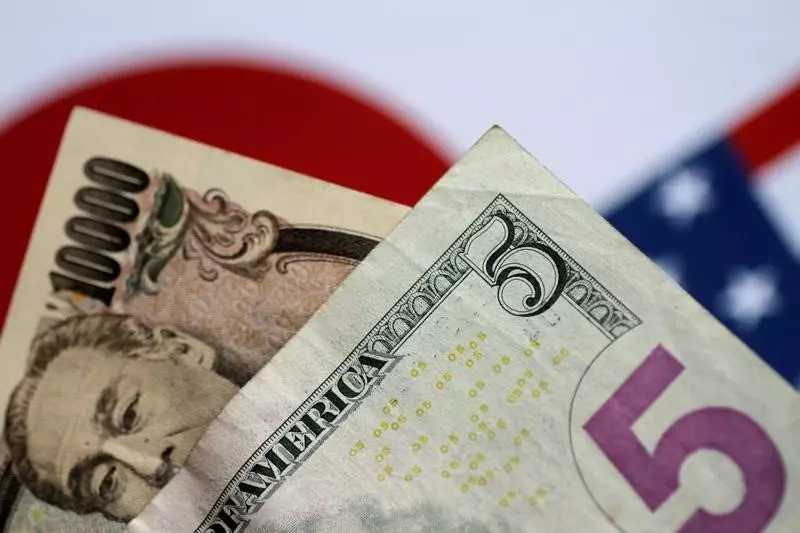As we pivot toward 2024, the potential for the U.S. Federal Reserve to scale back interest rates raises crucial questions for investors, particularly regarding its influence on the USD/JPY currency pair. Historically, changes in U.S. monetary policy have had significant repercussions on foreign exchange rates, yet the dynamics between the Fed’s actions and the valuation of the Japanese yen (JPY) are complex and multifaceted.
The expectation that a rate cut will necessarily lead to a depreciated USD/JPY is increasingly scrutinized. Analysts from Bank of America (BofA) emphasize that conventional wisdom does not fully capture the intricate movements and underlying economic factors that govern this currency pair. A simplistic view might suggest that easing U.S. monetary policy would uniformly weaken the dollar against the yen; however, historical data tells a more nuanced story.
Reviewing the trends during previous periods of Federal Reserve easing reveals contradictions to the anticipated direct correlation. For example, the global financial crisis (GFC) of 2007-2008 triggered a dramatic appreciation of the yen, primarily due to the unwinding of the yen carry trade. This was an exception in a broader historical context where rate cuts did not straightforwardly lead to a weakened USD/JPY. Periods of Fed lowering rates in the mid-1990s and early 2000s did not coincide with significant yen strength, suggesting that the state of the U.S. economy, not solely the interest rate changes, plays a vital role in currency valuation.
In other instances, the relationship between the Fed’s rate decisions and the USD/JPY can be impacted by external economic factors. These include shifts in Japan’s capital flows, which have evolved considerably over the past decade. A transition from reliance on foreign bonds towards foreign direct investment (FDI) and equity markets reflects a significant change in how Japanese capital interacts with U.S. monetary policies.
Japan’s FDI and equity investments are primarily motivated by long-term growth considerations rather than short-term interest rate movements. Consequently, it is likely that even if the U.S. lowers rates, Japanese investors will not rush to repatriate their funds in large volumes, thereby minimizing any upward pressure on the yen. Furthermore, ongoing demographic challenges within Japan have compounded these structural dynamics, suggesting that capital outflows may remain a consistent trend.
Moreover, the behavior of retail investors in Japan adds another layer of complexity. The growing engagement of these investors in foreign equity markets, facilitated by programs such as the Nippon Individual Savings Account (NISA), promotes a long-term investment philosophy that contrasts sharply with speculation driven by interest rate fluctuations. Consequently, this shift tilts the potential impact of Fed cuts towards a muted response from the yen.
Looking ahead, the economic outlook in the U.S. will determine the trajectory of the USD/JPY pair as the Fed is predicted to implement gradual and moderate rate cuts. Current forecasts by analysts anticipate fewer aggressive reductions than the market is pricing in, with expectations of around three 25-basis-point cuts by the end of 2024. Such scenarios suggest that even with lightening monetary policy in the U.S., the dollar may not weaken as projected against the yen.
Furthermore, the actions of Japanese life insurers, who have historically played a pivotal role in foreign bond markets, must also be considered. Their recent behaviors indicate a reduction in hedging strategies, tempered by bearish outlooks on the yen. As these institutional players scale back on foreign bond exposure, the likelihood of a drastic yen appreciation in response to Fed easing diminishes.
While the correlation between Fed rate cuts and the USD/JPY exchange rate remains a critical point of analysis, various economic variables shape this relationship. The evolution of Japan’s capital outflows, the long-term investment preferences of retail investors, and the overall context of the U.S. economy are pivotal in determining the currency pair’s movements. Analysts suggest that without a marked downturn in the U.S. economy, the effect of these rate cuts may be less impactful on the yen than previously expected.
Under a steady U.S. economy, even if rates fall, the USD/JPY could continue to maintain strength, with possible upward pressures remaining, especially if U.S. economic resilience persists. Ultimately, as global economic conditions evolve, so too will the implications of U.S. monetary policy on the JPY, reinforcing the necessity for a nuanced approach in forecasting currency movements.

